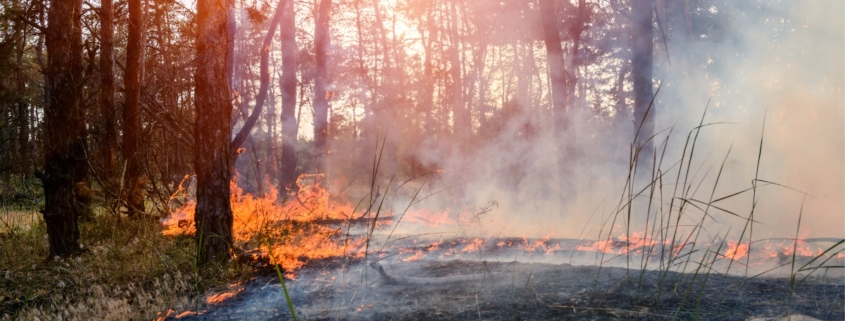Controlled Burning and Trees
Too many recent news stories have shown us just how devastating forest fires can be. From our neighbors to the north who have seen wildfires spread across millions of acres of Canadian land, to Maui’s heartbreaking loss of life and property, the force of these natural disasters is all too familiar. In an effort to maintain the safety of at-risk forests, controlled burning is sometimes used as a fire prevention method.
What Is Controlled Burning?
Also sometimes referred to as prescribed burns, controlled burning is a planned, low-intensity fire that aims to remove hazardous fuel such as low-growing vegetation. In doing so, these fires can help stimulate regrowth and reduce the risk of high-intensity, high-heat fires that might otherwise devastate landscapes.
There are two types of prescribed burns commonly used:
- Broadcast burns, which involve lighting fires across a designated space
- Pile burning, which entails the individual burning of multiple stacks of vegetation in a specific area
Pile burning is often used when broadcast burns are considered unsafe due to risky conditions, such as drought. In this approach, debris is cut, accumulated, and prepared for safe burning when weather permits. Oftentimes, dead trees and fallen branches are also used as materials to assist in the process. While prescribed burning can possibly kill shrubs and small seedlings, most mature trees can withstand the impact of these controlled fires.
How Is Controlled Burning Performed?
Before a controlled burn is initiated, a detailed plan is put together. This outlines the overall size of the fire, what it will burn, and what will be accomplished. Weather and environmental factors are included, as well as meticulous contingency plans should any areas of the fire need to be extinguished. Details also include how the fire will be set and managed, including smoke control, and how and when the public will be alerted.
Prescribed burns are performed all across the U.S., with thousands taking place every year. More than 99% are performed successfully, but naturally, all fires come with inherent risks. That’s why it’s critically important for everyone involved with controlled burns to follow protocols precisely.
In rural areas such as Georgia’s forests, prescribed burns can be an effective way to prevent uncontrollable fires. Yet, even when performed on your own land, you’ll still need to acquire a burn permit from the Georgia Forestry Commission before performing a controlled burn. You’ll also want to familiarize yourself with the best practices for performing controlled burns in southern ecosystems from the U.S. Department of Agriculture. This will help you when developing your written burn plan, which should include:
- The burn unit’s boundaries
- Information about the adjacent land parcels and their owners
- Topographical details
- Control lines
- Anticipated direction of the smoke
- Smoke management strategies
- Weather factors
- Burning techniques and fuels
- Smoke sensitive areas
There are several other important factors to consider when formulating a prescribed burn plan, including vegetation, soil, wildlife, human welfare, and air and water quality. Weather conditions are one of the most critical aspects to monitor. Ambient air temperatures should be 60 degrees or lower for wintertime burning, or 80 degrees or higher for burns performed during growing seasons, and relative humidity should be between 30 to 55 percent. Winds that are low in speed and consistent in direction are also important for ensuring the fire remains controlled.
With so many variables to consider, many land owners turn to experts from the Georgia Forestry Commission when pursuing a controlled burn. While these professionals can’t actually ignite the fire themselves, they can consult with you on every aspect of the controlled burn to mitigate risks to the greatest possible degree.
Minimizing the risk of forest fires is an important aspect of being a responsible land owner, and caretaker of our environment and community. Removing dead or at-risk trees can also help to keep your property safe. Premier Tree Solutions can help you with every aspect of tree care, from root to bud. Contact us by calling 404.252.6448 or by sending us a message online.










